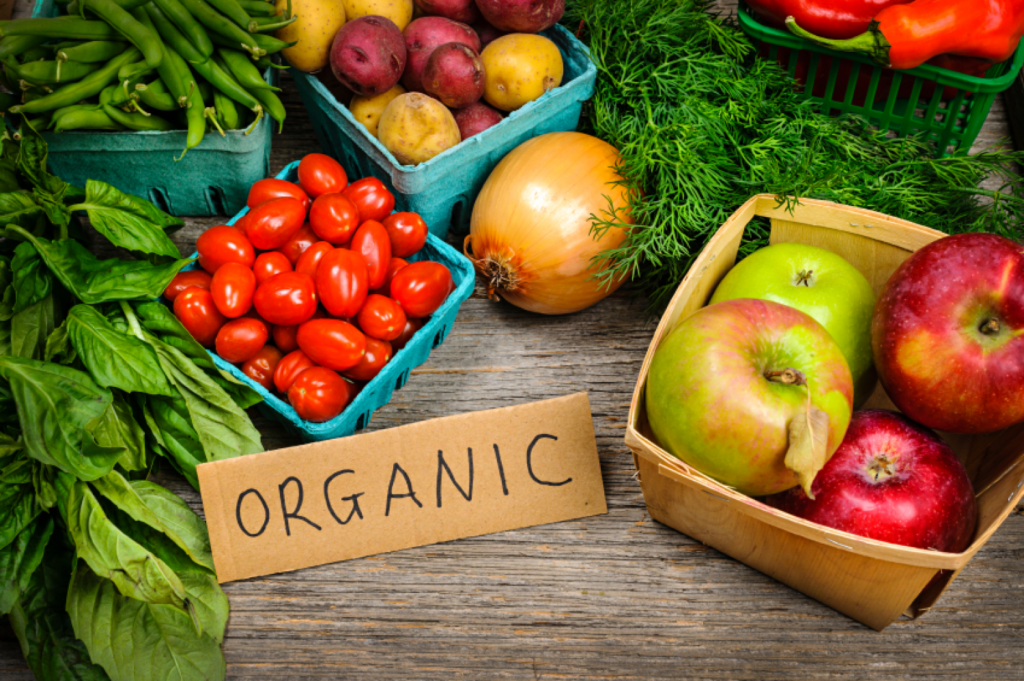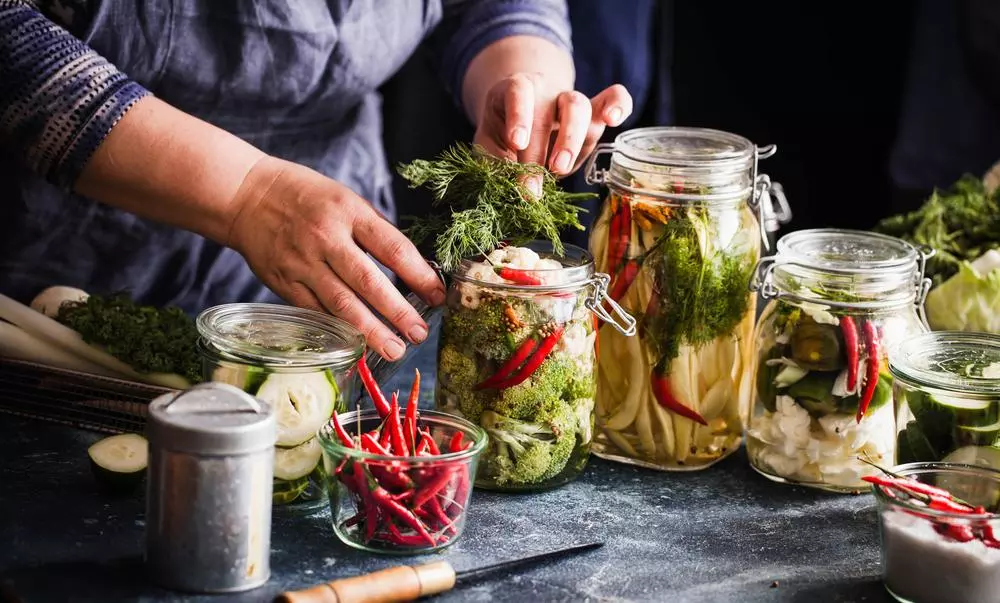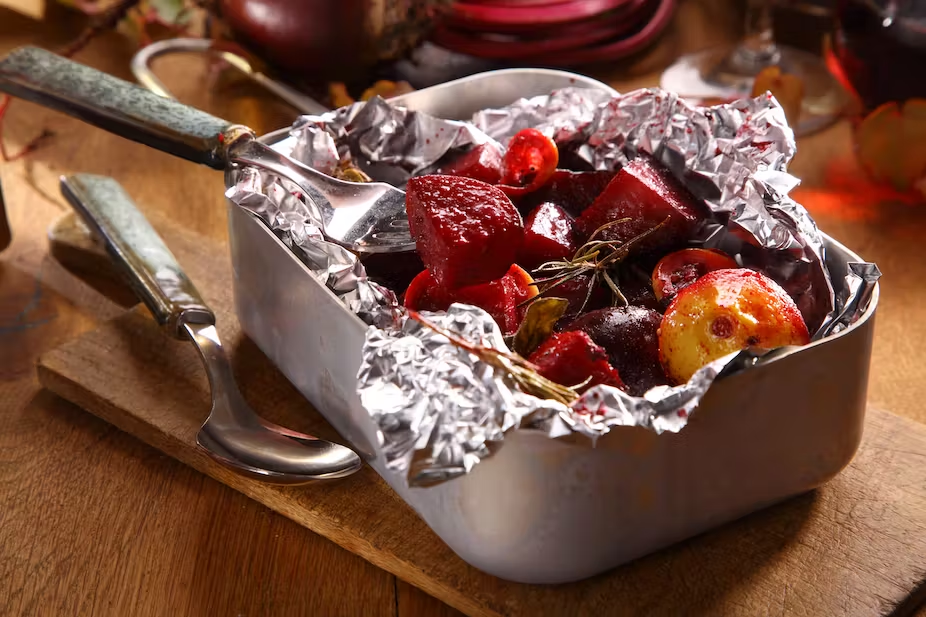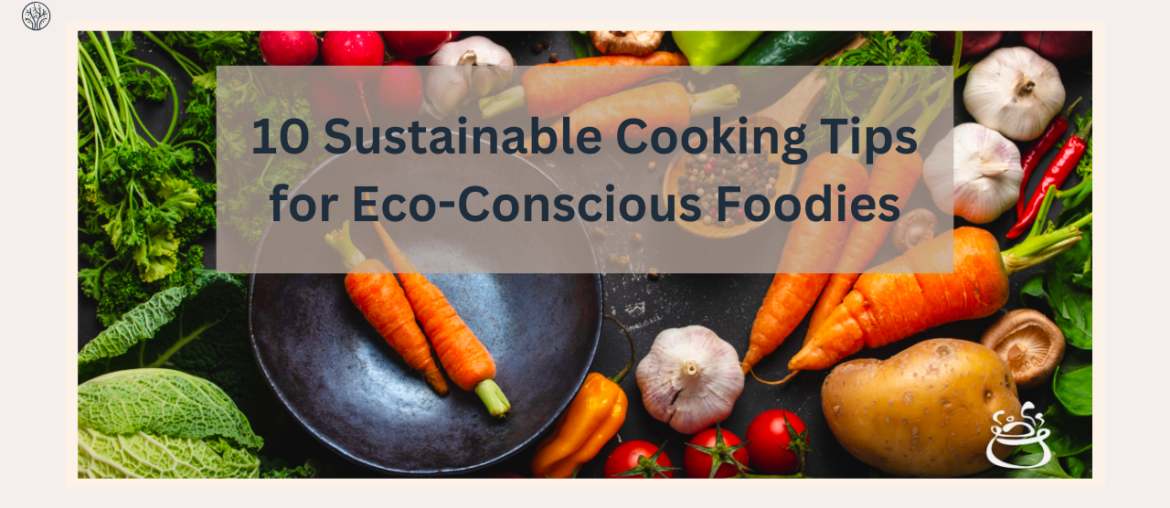In today’s world, the importance of sustainable living cannot be overstated. This extends to all aspects of our lives, including the way we cook and prepare our meals. As eco-conscious foodies, we can make a significant difference by adopting sustainable cooking practices.
But, what is sustainable cooking, exactly? It’s not just about how you cook; it’s about the whole process from preparation to cleaning up the aftermath. In this article, we’ll explore some essential sustainable cooking tips that can help you reduce your environmental footprint from start to finish.
- Sustainable Cooking Tip #1: Plan Your Meals
- Sustainable Cooking Tip #2: Buy From Locals
- Sustainable Cooking Tip #3: Opt For Organic Products
- Sustainable Cooking Tip #4: Reuse
- Sustainable Cooking Tip #5: Use Sustainable Cookware
- Sustainable Cooking Tip #6: Switch to Eco-friendly Fuels
- Sustainable Cooking Tip #7: Cook In Bulk
- Sustainable Cooking Tip #8: Use Aluminum Foil Effectively
- Sustainable Tip #9: Proper Disposal Of Waste
- Sustainable Tip #10: Eco-friendly Cleaning
- Conclusion
Sustainable Cooking Tip #1: Plan Your Meals
Planning your meals is one of the easiest sustainable cooking tips to follow. By mapping out your menu, you can save money and minimize your carbon footprint.
Food waste is a major environmental problem. Discarded food contributes to greenhouse gas emissions and the depletion of natural resources. With a clear meal plan, you will buy only what you need, thereby reducing food waste.
Additionally, meal planning helps you avoid buying convenience, pre-packaged, or takeout meals. They are often packaged in excessive plastic and other non-recyclable materials, so not buying them means you generate less packaging. This results in less waste ending up in landfills or oceans, helping to preserve natural ecosystems.
Sustainable Cooking Tip #2: Buy From Locals
You might be surprised, but shopping from local farmers can reduce our reliance on single-use plastics. You can achieve this by patronizing local food shops and zero waste refilleries. They often offer products in bulk, so you can bring your own containers for refilling. This is one of the easiest ways to reduce plastic waste in the environment.
Another reason to buy from local sources is that it helps reduce transport emissions associated with imported foods. Many supermarket items travel thousands of miles before reaching your plate, contributing significantly to greenhouse gas emissions. In contrast, locally sourced ingredients have a shorter supply chain. This means fewer emissions are generated during transportation.
By choosing locally-grown produce, you can enjoy fresh, sustainable foods while reducing your carbon footprint. This is a win-win for both you and the environment.
Sustainable Cooking Tip #3: Opt For Organic Products

One essential practice for conscious cooking is to prioritize organic products. Organic farming methods avoid the use of harmful chemicals. Instead, these methods focus on natural and sustainable techniques. By following this approach, organic farmers can protect soil, water, and biodiversity while producing healthier foods.
Organic foods provide more nutrients, minerals, and vitamins compared to conventionally grown counterparts. Furthermore, they often have a superior taste and quality. Fortunately, you have complete freedom to make eco-conscious choices in this regard.
Look for products bearing the U.S. Department of Agriculture (USDA) organic seal. This provides assurance that the foods were produced without the use of antibiotics, hormones, pesticides, irradiation, or bioengineering.
You can even plant your own organic food garden. Home gardening allows you to have control over the entire process, from seed to table. Not only does this ensure food quality, but it’s also a sustainable effort that reduces your reliance on store-bought produce.
Sustainable Cooking Tip #4: Reuse

Embrace the concept of reuse! This is one of the core sustainable cooking tips to reduce waste in the kitchen. By following this concept, you are one step closer towards a more sustainable lifestyle.
Reuse tubs, bottles, and containers, and reusable freezer bags. These items can provide plenty of storage for when you cook in bulk. This reduces the need for single-use plastic bags and containers that end up in landfills.
Also, make the most of your leftovers. Rather than discarding leftover carrots, celery, onions, potatoes, etc., use them to create a flavorful soup stock. With some meat or noodles, you will have a hearty soup that’s both delicious and eco-friendly.
Sustainable Cooking Tip #5: Use Sustainable Cookware
When it comes to sustainable cooking, the choice of cookware is paramount. The best sustainable cookware can help save energy and prevent harmful chemicals from contaminating your food.
Consider cookware made with new ceramic-based nonstick technology. These pans are known for their excellent heat conductivity, thanks to the aluminum they’re made from. Besides, their ceramic coating remains stable until temperatures rise above 1,000 degrees Fahrenheit (538 degrees Celsius). This means they are not only more durable but also safer for your health and the environment.
Another tip is to buy cookware with tightly fitting lids. A tight-fitting lid can help minimize heat energy loss during cooking, further reducing your energy consumption.
For an even more sustainable choice, seek out cookware made from recycled materials. There are a lot of cookware with handles that are made from recycled aluminum. Some manufacturers even use sustainable materials like bamboo, which is both renewable and biodegradable. These are good signs because they reduce the demand for new resources for production.
Sustainable Cooking Tip #6: Switch to Eco-friendly Fuels
The energy source we use for cooking also has an impact on the environment. Therefore, consider switching to eco friendly cooking fuels, such as natural gas, biogas, or liquefied petroleum gas (LPG).
Eco-friendly fuels offer several advantages over conventional energy sources. One of the primary benefits is their immediate response and precise control. When using natural gas or LPG, there’s no need to wait for burners to heat up or cool down. This instant control not only saves time but also conserves energy.
Moreover, modern stoves are equipped with pilotless ignition systems. These systems ensure that gas is consumed only when the burner is turned on. With this feature, you can lower your energy usage and costs by approximately 1/3.
Additionally, these fuels are cleaner-burning compared to coal. This means they emit fewer greenhouse gases, making them a more sustainable choice for your cooking needs.
Sustainable Cooking Tip #7: Cook In Bulk
Cooking in bulk is a simple yet effective way to minimize your environmental impact. By preparing larger quantities of food at once, you can reduce the frequency of cooking sessions. This can ultimately save you time, energy, and resources.
One of the key advantages of bulk cooking is that you use less fuel. When you cook a single large meal, you reduce the overall energy consumption compared to multiple smaller ones.
Additionally, you can take advantage of frozen dishes. There will always be convenient meals ready to go on your busy days. However, remember to defrost them efficiently. Before using the microwave or stovetop, take the frozen food out of the freezer in advance to avoid wasting too much energy.
Sustainable Cooking Tip #8: Use Aluminum Foil Effectively

For many years, cost-conscious cooks have relied on aluminum foil for its versatility and convenience. What’s even more appealing is that many of these foil-related habits are eco-friendly.
Make the most of your aluminum foil by using it to wrap lunches, snacks, and leftovers. This allows you to rinse and reuse the foil multiple times before disposing of it. You can reduce waste and save money in the long run.
Aluminum foil can also be used as a kitchen aid to minimize resource consumption. Consider lining pans and baking dishes with aluminum foil. That way, washing dishes will be easier and require less water. This is a huge plus in terms of water conservation.
Try eco-friendly aluminum foil from Reynolds Wrap. They offer recycled aluminum foil sourced from post-consumer materials such as automobile components, cookware, gutters, etc. Their production process reduces energy consumption by 80% compared to producing foil from new materials. By choosing recycled aluminum foil, you not only reduce your environmental impact but also support companies striving for sustainability.
Sustainable Tip #9: Proper Disposal Of Waste
Even if you consciously avoid waste during cooking, it’s almost impossible to eliminate it entirely. However, you can take steps to ensure that your waste is disposed of in an environmentally responsible manner.
Learning to separate waste correctly is one of the basics. Sort waste into recyclable waste, non-recyclable waste and organic waste. This simple step ensures that recyclable materials don’t end up in landfills, where they can take years to decompose.
Besides, to make the best possible use of organic waste, apply composting. Consider using a worm box or composting system. A worm box, in particular, can be an excellent addition to your kitchen or garden. Earthworms efficiently decompose organic waste in just a few weeks, transforming it into nutrient-rich soil. This fertile soil can be used for urban gardening, reducing the need for chemical fertilizers and promoting healthy plant growth.
Sustainable Tip #10: Eco-friendly Cleaning
Sustainable cooking tips don’t stop at cooking; it’s also about tackling the aftermath in the kitchen. The good news is that you can also clean your kitchen in an eco-friendly way.
Start by swapping out your traditional cleaning tools for more sustainable options. One excellent choice is to use sink brushes made from wood with agave fibers. These brushes are plastic-free and biodegradable, reducing your plastic waste footprint.
Another solution is to use eco-friendly cleaning products. Many dish soaps available out there are made from only natural, sustainable ingredients. This ensures the safety of aquatic ecosystems when they enter the water supply.
Conclusion
Sustainable cooking is not just a buzzword; it can have a significant positive impact on the environment and your community. By applying the sustainable cooking tips above, you can play a vital role in reducing your ecological footprint. Every small step you take in the kitchen contributes to a more sustainable and environmentally friendly future. So, go ahead, embrace sustainable cooking, and savor the delicious, guilt-free flavors of a greener world.









